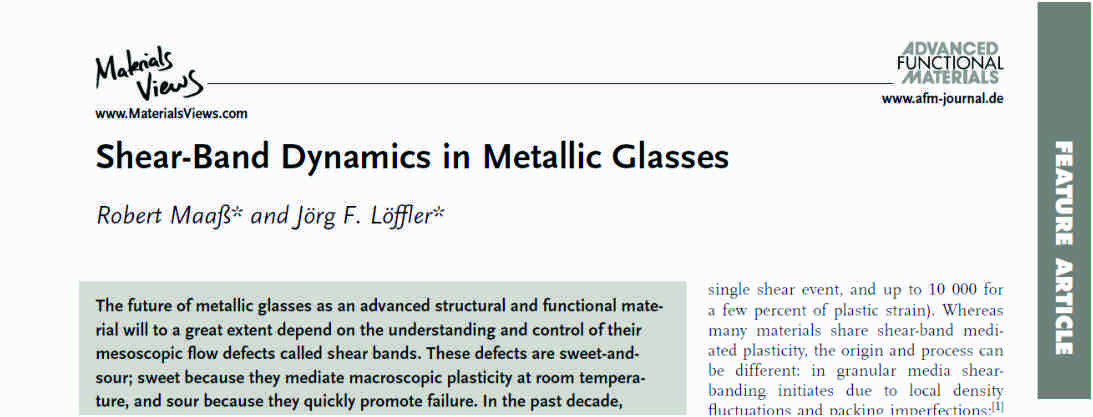At high enough applied stresses, metallic glasses can deform plastically via a strain localization mechanism. This leads to the formation of nanometer thin shear defects, called shear bands, which are a major hurdle for structural applications, because they promote crack formation and therefore failure.
In the past years, we have carefully investigated the dynamics of shear bands in metallic glasses. Our research has traced different stages in real time during a shear-band cycle. This body of work revealed thermally activated shear-band propagation, shear-band arrest, shear-band aging, shear-band creep, and was also able to measure shear-band initiation. Furthermore, the influence of alloys chemistry and topology has been investigated, revealing quite general trends that can rationalize why some metallic glasses are mechanically stable during shear, and others not. Our recent invited review article in Advanced Functional Materials summarizes a larger fraction of this work, and ongoing efforts are dedicated to find a suitable tuning knob to design metallic glasses that are plastically stable.
Additional publications on shear-band dynamics:
